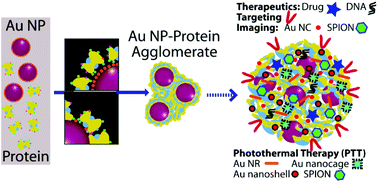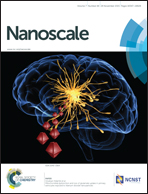Theranostic potential of gold nanoparticle-protein agglomerates
Abstract
Owing to the ever-increasing applications, glittered with astonishing success of gold nanoparticles (Au NPs) in biomedical research as diagnostic and therapeutic agents, the study of Au NP–protein interaction seems critical for maximizing their theranostic efficiency, and thus demands comprehensive understanding. The mutual interaction of Au NPs and proteins at physiological conditions may result in the aggregation of protein, which can ultimately lead to the formation of Au NP–protein agglomerates. In the present article, we try to appreciate the plausible steps involved in the Au NP-induced aggregation of proteins and also the importance of the proteins’ three-dimensional structures in the process. The Au NP–protein agglomerates can potentially be exploited for efficient loading and subsequent release of various therapeutically important molecules, including anticancer drugs, with the unique opportunity of incorporating hydrophilic as well as hydrophobic drugs in the same nanocarrier system. Moreover, the Au NP–protein agglomerates can act as ‘self-diagnostic’ systems, allowing investigation of the conformational state of the associated protein(s) as well as the protein–protein or protein–Au NP interaction within the agglomerates. Furthermore, the potential of these Au NP–protein agglomerates as a novel platform for multifunctional theranostic application along with exciting future-possibilities is highlighted here.


 Please wait while we load your content...
Please wait while we load your content...